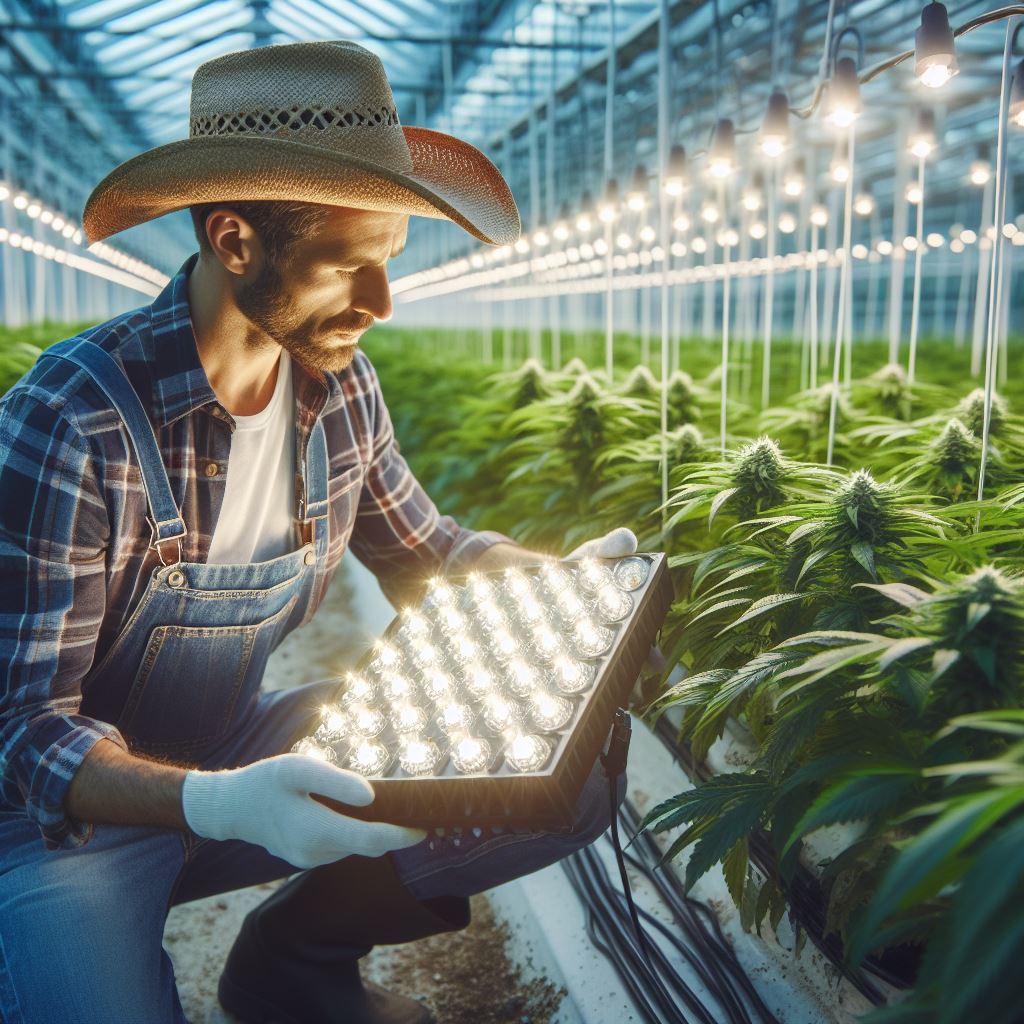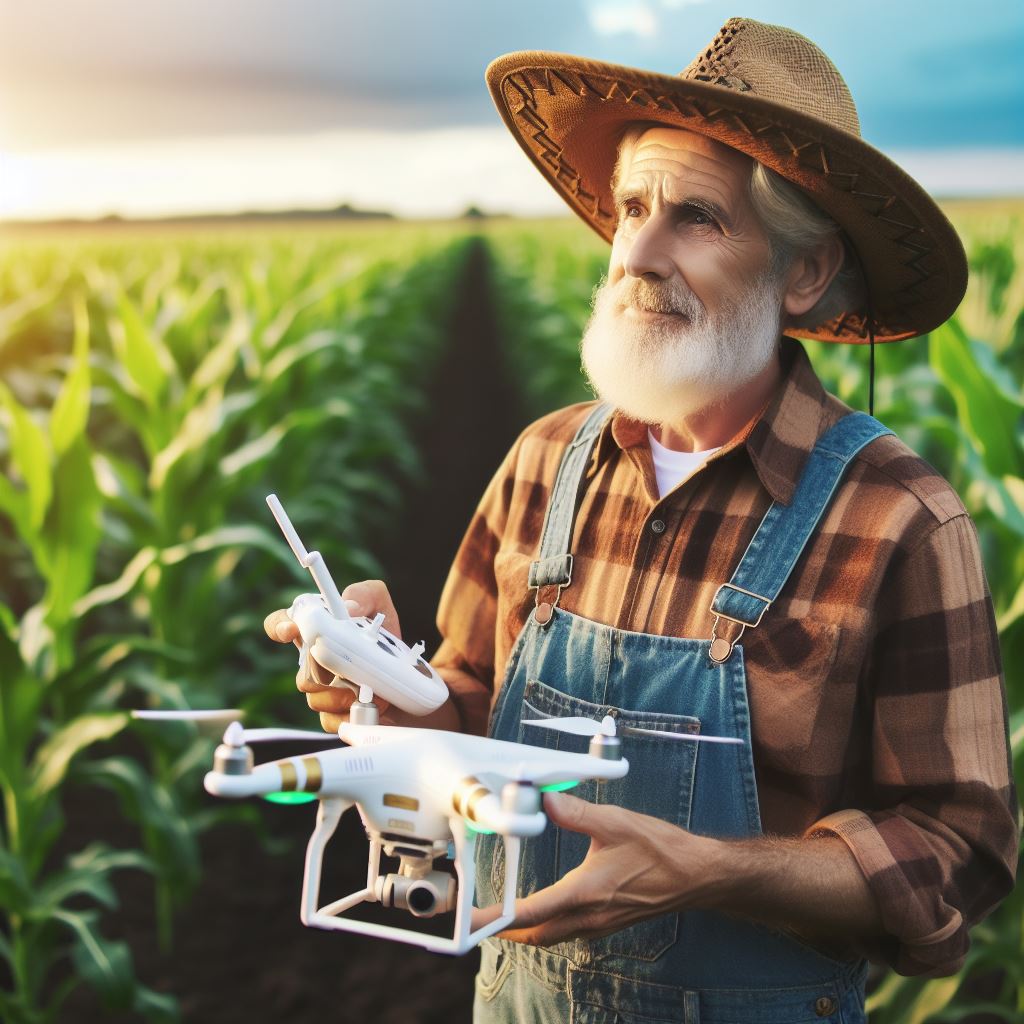Introduction
Definition and importance of data analytics in agriculture
Data analytics is the process of examining vast quantities of data to uncover meaningful patterns and insights.
In agriculture, it plays a crucial role in optimizing farming practices and improving productivity.
By analyzing data collected from various sources such as sensors, drones, and satellites, farmers gain valuable insights into crop health, nutrient requirements, pest control, weather conditions, and market trends.
This knowledge empowers them to make data-driven decisions, leading to higher yields, reduced costs, and increased profitability.
Overview of how data analytics is transforming modern farming
Data analytics is revolutionizing modern farming by enabling precision agriculture practices.
With the help of advanced technologies and analytics tools, farmers can now monitor every aspect of their fields in real-time.
They can precisely determine the amount of water, fertilizer, and pesticides required for each specific area, saving precious resources and ensuring optimal growth.
Additionally, data analytics allows farmers to forecast yield potential, detect diseases or pest outbreaks, and implement preventive measures efficiently.
By analyzing historical data and combining it with real-time information, farmers can also predict market demands and make informed decisions about planting, harvesting, and selling their produce, ensuring maximum profitability.
Basically, data analytics is transforming the agricultural sector by providing farmers with actionable insights and enabling them to make more informed and efficient decisions.
In the next sections, we will delve deeper into the tools and techniques used in data analytics for modern farming and explore its practical applications in more detail.
Stay tuned for an exciting journey into the world of data-driven agriculture!
The Role of Big Data in Modern Farming
What big data is and its relevance to agriculture
Big data refers to the large volumes of complex information that can be collected and analyzed to gain insights.
In agriculture, big data plays a crucial role by providing valuable insights into various aspects of farming.
Examples of how big data is collected and analyzed in farming
- Sensor-based Technology: Farms use sensors to collect data on soil moisture, temperature, and nutrient levels, enabling farmers to optimize irrigation and fertilization practices.
- Satellite Imagery: Satellite images provide farmers with valuable information about crop health, growth patterns, and potential yield variations.
- Weather Data: Real-time weather data helps farmers make informed decisions regarding planting, harvesting, and pest control.
- Crop Yield Monitoring: By analyzing data from harvesters and yield monitors, farmers can identify patterns, understand crop performance, and plan for future seasons.
Advantages and benefits of utilizing big data in decision-making
- Improved Resource Management: Big data analytics helps farmers optimize resource allocation by identifying areas of over or under utilization, leading to cost savings.
- Increased Productivity and Efficiency: Analyzing big data allows farmers to streamline their operations, resulting in enhanced productivity and reduced waste.
- Enhanced Crop Management: By analyzing data on soil conditions, weather patterns, and historical yield data, farmers can make more informed decisions regarding crop selection, planting, and harvesting.
- Early Disease Detection and Pest Control: Big data analysis enables early detection of crop diseases, allowing farmers to take appropriate preventive measures and minimize losses.
- Precision Farming: Big data helps in precision agriculture by enabling farmers to tailor inputs, such as fertilizers and pesticides, according to specific crop needs, reducing environmental impact.
- Market Insights: By analyzing market data, farmers can identify trends, demand patterns, and pricing information, enabling them to make informed decisions regarding crop selection and marketing strategies.
In short, big data plays a pivotal role in modern farming by providing valuable insights into various aspects of agricultural practices.
Transform Your Agribusiness
Unlock your farm's potential with expert advice tailored to your needs. Get actionable steps that drive real results.
Get StartedFrom optimizing resource allocation to improving crop management and market strategies, big data helps farmers make informed decisions, ultimately leading to increased yields, reduced costs, and sustainable farming practices.
The use of big data in agriculture continues to evolve, promising even greater advancements in the future.
Read: Water Tech in Controlled Ag Environments
Applications of Data Analytics in Farm Management
Predictive analytics for crop yield estimation and optimization
Data analytics plays a vital role in predicting crop yields, allowing farmers to optimize their production.
- Advanced algorithms analyze historical data, weather patterns, and soil conditions to forecast crop yields accurately.
- Farmers can make informed decisions regarding planting density, irrigation schedules, and fertilizer application based on data insights.
- Predictive analytics helps farmers estimate the optimal time for harvesting, avoiding yield losses due to premature or delayed harvesting.
Monitoring and managing livestock health using data analytics
Data analytics helps farmers ensure the well-being of their livestock through continuous health monitoring and management.
- Sensors and wearable devices collect real-time data on vital signs, activity levels, and behavior patterns of animals.
- Advanced analytics platforms analyze this data to identify early signs of illness, stress, or abnormal behavior in livestock.
- Farmers can take prompt actions such as adjusting feed, administering medication, or segregating sick animals to prevent disease outbreaks.
Precision farming: Maximizing resource efficiency through data analysis
Data analytics enables precision farming techniques, optimizing resource usage and reducing environmental impact.
- Soil sensors and aerial imagery provide valuable data on soil moisture, nutrient levels, and crop health.
- Data analytics platforms process this information to create detailed maps of field variability, guiding farmers in targeted interventions.
- By identifying optimal seeding rates, fertilization levels, and irrigation needs, farmers can maximize yields while minimizing inputs like water and fertilizers.
Generally, data analytics plays a crucial role in various aspects of farm management, enhancing productivity and sustainability.
Predictive analytics helps farmers estimate crop yields accurately, enabling optimization strategies.
Livestock health monitoring using data analytics ensures early intervention in case of illness or stress.
Precision farming techniques leverage data analysis for resource-efficient practices, reducing waste and environmental impact.
Embracing data analytics empowers modern farmers to make informed decisions and navigate the complexities of farming in an increasingly data-driven world.
Read: Ag Tech: Improving Crop Yields
Data Collection and Sensors in Agriculture
Introduction to various sensors used in modern farming
In modern farming, the use of various sensors has revolutionized the way data is collected and monitored on farms.
These sensors are designed to gather real-time information about different aspects of the farm and its surroundings.
From soil moisture sensors to weather sensors, each has its specific purpose.
One of the most common sensors used in modern farming is the soil moisture sensor.
This sensor measures the moisture content in the soil, which is crucial information for farmers to determine the appropriate amount of water their crops need.
By accurately measuring soil moisture levels, farmers can optimize water usage, prevent overwatering or under watering, and ultimately increase crop productivity.
Another important sensor in modern farming is the weather sensor.
Weather conditions greatly impact plant growth, and having real-time weather data is crucial for making informed decisions.
These sensors provide data on temperature, humidity, rainfall, wind speed, and solar radiation.
Farmers can use this information to adjust irrigation schedules, protect crops from extreme weather events, and optimize pest and disease management strategies.
Apart from soil moisture and weather sensors, there are also sensors to measure other important parameters in agriculture.
For example, pH sensors measure soil acidity, which can help farmers determine the right type and amount of fertilizers needed.
Showcase Your Farming Business
Publish your professional farming services profile on our blog for a one-time fee of $200 and reach a dedicated audience of farmers and agribusiness owners.
Publish Your ProfileLight sensors measure the amount of sunlight reaching the plants, allowing farmers to optimize crop placement and adjust lighting conditions in greenhouses.
Importance of accurate data collection and interpretation
Accurate data collection and interpretation are fundamental in modern farming.
The data collected by various sensors provide valuable insights that can drive decision-making and improve farm management practices.
With accurate data, farmers can make informed decisions regarding irrigation, fertilization, pest control, and overall resource management.
Ability to optimize resource usage
One of the key benefits of accurate data collection is the ability to optimize resource usage.
By monitoring soil moisture levels, farmers can ensure that crops receive just the right amount of water, reducing water waste and minimizing the risk of overwatering or drought stress.
Similarly, by collecting weather data, farmers can adjust irrigation schedules and take preventive measures against extreme weather events, thus minimizing crop losses.
Enables farmers to implement precision agriculture techniques
Accurate data collection also enables farmers to implement precision agriculture techniques.
Precision agriculture involves using data-driven insights to optimize farming practices, resulting in increased productivity and reduced environmental impact.
By integrating data from various sensors, farmers can identify variations within their fields and adapt their cultivation practices accordingly.
This not only maximizes yields but also minimizes the use of fertilizers, pesticides, and water.
Allows farmers to monitor crop health and detect potential issues early on
Furthermore, accurate data collection allows farmers to monitor crop health and detect potential issues early on.
For example, by regularly monitoring soil pH levels, farmers can identify and rectify soil acidity problems before they affect crop growth.
By combining data from different sensors, such as soil moisture and temperature, farmers can detect patterns that indicate the presence of pests or diseases.
Early detection enables prompt action, preventing further spread and reducing crop losses.
Integration of different data sources for a holistic approach
To fully leverage the potential of data analytics in modern farming, integration of different data sources is essential.
By combining data from multiple sensors and sources, farmers can take a holistic approach to farm management.
Gain a comprehensive understanding of their farm’s conditions
Integration of data sources allows farmers to gain a comprehensive understanding of their farm’s conditions.
For example, by analyzing soil moisture data alongside weather data, farmers can correlate rainfall patterns with soil moisture levels and adjust irrigation accordingly.
This integration enables them to make informed decisions and prevent water wastage.
Identify cause-and-effect relationships
Moreover, by integrating data from different sensors, farmers can identify cause-and-effect relationships.
For instance, by analyzing soil moisture, temperature, and pest incidence data, farmers can determine how variations in moisture levels influence pest activity.
This knowledge can help them develop targeted pest management strategies, reducing the use of chemical pesticides and increasing sustainability.
Enables advanced analytics and predictive modeling
Integration of data sources also enables advanced analytics and predictive modeling.
By combining data on soil conditions, weather patterns, and crop performance, farmers can develop models that accurately predict crop growth, yield potential, and pest outbreaks.
These predictions allow farmers to optimize resource allocation, plan for market demands, and minimize losses due to unfavorable conditions.
Essentially, data collection and sensors play a critical role in modern farming.
Various sensors provide vital information about soil moisture, weather conditions, pH levels, and more.
Accurate data collection and interpretation are crucial for optimizing resource usage, implementing precision agriculture techniques, and monitoring crop health.
Integration of different data sources enables a holistic approach to farm management, allowing farmers to make informed decisions and improve overall productivity.
Read: Hydroponic Systems: Tech Advances

Challenges and Limitations of Data Analytics in Farming
Concerns regarding data privacy and security
Data privacy and security have become significant concerns in the era of data analytics in farming.
Farmers are worried about the potential risks associated with sharing their sensitive data with third-party analytics providers.
This concern is understandable, considering the potential implications of a data breach.
To address these concerns, farmers need to ensure that they choose reputable and trustworthy data analytics providers.
They should also implement robust security measures to protect their data, such as encryption and secure storage systems.
Additionally, farmers should carefully read the terms and conditions of the analytics tools they use to understand how their data will be handled.
Accessibility and affordability of data analytics tools for small-scale farmers
Another challenge in implementing data analytics in farming is the accessibility and affordability of these tools, especially for small-scale farmers.
Many advanced data analytics tools are typically expensive, making them unaffordable for farmers with limited financial resources.
To overcome this challenge, governments and agricultural organizations should strive to provide subsidies or grants for small-scale farmers to access and afford data analytics tools.
Showcase Your Farming Business
Publish your professional farming services profile on our blog for a one-time fee of $200 and reach a dedicated audience of farmers and agribusiness owners.
Publish Your ProfileAdditionally, collaboration between farmers and technology companies can lead to the development of more affordable and specifically tailored data analytics solutions for the agricultural sector.
Overcoming resistance to change and embracing data-driven decision making
Resistance to change and the traditional mindset of farmers pose another challenge to the adoption of data analytics in farming.
Some farmers may be skeptical about the benefits that data-driven decision making can bring to their agricultural practices.
Convincing these individuals to embrace data analytics can be a complex task.
To address this limitation, educational programs and workshops should be organized to raise awareness about the benefits of data analytics in farming.
Providing real-life examples of successful implementations can help farmers understand the potential improvements that data-driven decision making can offer.
Additionally, offering support and training to farmers during the transition phase can facilitate the adoption of data analytics in their daily practices.
In general, while data analytics in modern farming offers numerous opportunities for improved efficiency and sustainability, several challenges and limitations must be addressed.
Addressing concerns related to data privacy and security, ensuring accessibility and affordability of tools for small-scale farmers, and overcoming resistance to change are crucial steps in harnessing the full potential of data analytics in the agricultural sector.
With the right measures and support in place, farmers can unlock the power of data to make informed and efficient decisions, leading to a more productive and sustainable future for agriculture.
Read: Sustainable Ag Tech: What’s New?
Gain More Insights: AI in Farms: Precision Agriculture’s Rise
Case Studies of Successful Data Analytics Implementation in Farming
Real-world examples of farms benefiting from data analytics
- Farmer John, a small-scale farmer, implemented data analytics to optimize irrigation schedules based on weather patterns.
- By analyzing historical data and using predictive models, John was able to reduce water consumption by 30%.
- The implementation of data analytics also allowed him to improve crop yield and quality.
- Another case study is FarmTech, a large commercial farm that used data analytics to improve inventory management.
- By analyzing data on supply and demand, FarmTech was able to optimize their purchasing and reduce waste.
- This resulted in significant cost savings and increased profitability for the farm.
Positive impact on productivity, profitability, and sustainability
- Data analytics has revolutionized farming by enabling farmers to make data-driven decisions.
- This has led to increased productivity as farmers can optimize processes and resource allocation.
- By analyzing data on soil conditions, weather patterns, and crop health, farmers can take proactive measures to maximize yield.
- Data analytics also helps farmers identify inefficiencies and potential risks, allowing them to address issues promptly.
- Improved profitability is another significant benefit of data analytics in farming.
- By optimizing various aspects of their operations, farmers can reduce costs, increase revenue, and improve overall financial performance.
- For example, by using data analytics to optimize seed selection and minimize waste, farmers can increase profit margins.
- Sustainability is a crucial aspect of modern farming, and data analytics plays a vital role in achieving it.
- By analyzing data on resource consumption, farmers can implement sustainable practices and reduce their environmental footprint.
- This includes optimizing water usage, minimizing pesticide and fertilizer application, and promoting biodiversity.
- By leveraging data analytics, farmers can ensure the long-term viability of their operations and contribute to a sustainable future.
In essence, case studies of successful data analytics implementation in farming demonstrate the tangible benefits it brings.
Real-world examples show how farmers can optimize various aspects of their operations, leading to increased productivity, profitability, and sustainability.
Data-driven decision-making allows farmers to make proactive adjustments, reduce costs, and improve overall financial performance.
Moreover, data analytics enables farmers to implement sustainable practices and reduce their environmental impact.
Overall, data analytics is a powerful tool that has revolutionized modern farming and holds immense potential for future advancements.
Conclusion
Recap of the importance and potential of data analytics in modern farming
Data analytics in modern farming plays a crucial role in optimizing efficiency, increasing productivity, and reducing costs.
By leveraging data, farmers can make informed decisions, improve crop yields, and manage resources effectively.
Encouraging farmers to embrace and explore opportunities for data-driven farming practices
It is essential for farmers to embrace data analytics as a tool for decision-making in farming operations.
By harnessing the power of data, farmers can gain valuable insights, identify patterns, and predict trends to make proactive decisions in crop management, disease control, and resource allocation.
Embracing data-driven farming practices can lead to increased profitability, sustainability, and resilience in the face of climate change and market uncertainties.
In a nutshell, data analytics has revolutionized modern farming by providing farmers with actionable insights and tools to improve their operations.
From precision agriculture to livestock management, data analytics offers numerous benefits such as increased yields, reduced environmental impact, and improved resource efficiency.
By adopting data-driven farming practices, farmers can stay ahead in the ever-evolving agricultural landscape and ensure long-term success.




